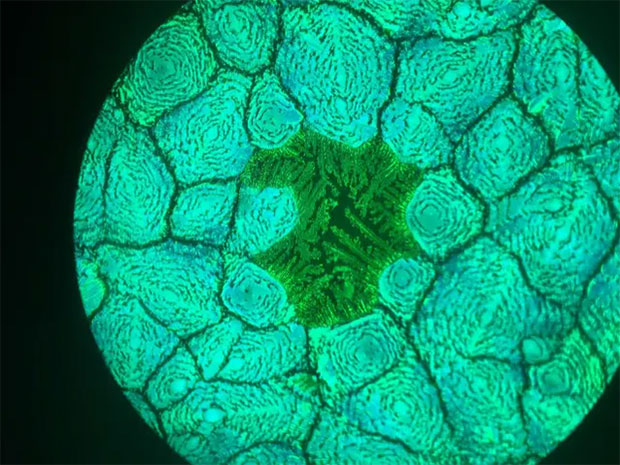Researchers have uncovered the mysterious properties of perovskite – a substance often referred to as a “miracle material.” This discovery paves the way for the development of highly efficient solar cells that far surpass current technology.
Using new microscopy techniques, scientists from the University of Cambridge have explained why the relatively unstable structure of perovskite can enhance its efficiency.

Perovskite can also be synthesized in the laboratory.
Perovskite materials have emerged in recent years as a promising alternative to solar cells that rely on silicon crystals. They absorb sunlight and convert it into electricity more efficiently, while also being cheaper to produce.
Less than a year ago, scientists from the Technical University of Berlin achieved a new world record for solar cell efficiency using perovskite, surpassing the standard silicon layer record of 28% with an efficiency of 29.15%.
This latest research was conducted in collaboration with the Cavendish Laboratory at Cambridge and the Diamond Light Source synchrotron facility in Didcot, UK, along with the Okinawa Institute of Science and Technology in Japan, to test various techniques to better understand perovskite.
“Our idea was to perform something called multimodal microscopy, where we examine similar samples using different types of microscopy and essentially try to find correlations in the properties we derive from each,” said Kyle Frohna, a PhD student at the University of Cambridge.
“What we see is that two forms of disorder occur simultaneously. Electronic disorder related to defects reduces performance, while spatial chemical disorder seems to improve it. What we found is that chemical disorder – ‘good’ disorder in this case – minimizes the ‘bad’ disorder from defects by separating charge carriers.”
Formed deep within the Earth’s crust, perovskite can also be synthesized in laboratories and has the potential to transform various fields.

Perovskite has been hailed as a “miracle material” due to its potential to revolutionize everything from solar energy to internet speed.
It could even hold the “key” to super connectivity, as a 2017 study showed that this material could accelerate computer and internet processing speeds by up to 1,000 times.
Miguel Anaya, a researcher in the Department of Chemical Engineering and Biotechnology at the University of Cambridge, stated: “This approach paves the way for new avenues to optimize at the nanoscale, functioning better for targeted applications.”
“Now, we can explore different types of perovskite, not just useful for solar cells but also effective for LEDs or detectors, and understand their operating principles.”
Professor of Materials Science Z. Valy Vardeny from the University of Utah described this discovery as “incredible, a miraculous material” in 2017, after researchers improved the solar-to-energy performance of perovskite by more than ten times in just a few years.

















































